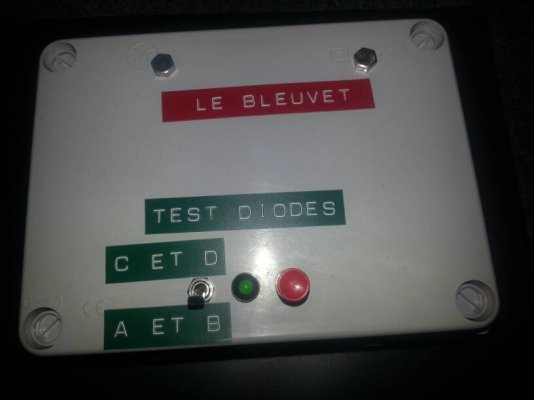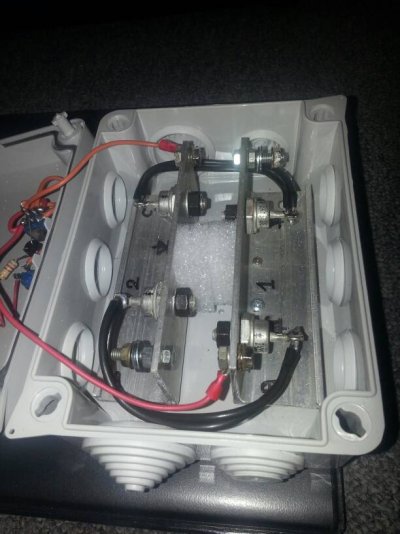firstbase
Guru
- Joined
- Nov 6, 2016
- Messages
- 1,644
- Location
- United States
- Vessel Name
- Black Eyed Susan
- Vessel Make
- Grand Banks 42' Classic
I'm going through hull zincs every month. Had new ones installed on November 22nd. Diver on January 13th says port hull zinc at or below 50% and starboard one at 75%. Had a good electrician out to inspect everything. Certified in Corrosion, etc. Well known "anal" guy. In fact the first thing he said when he got on the boat was "Did (guy who refered me to him) tell you how anal I am?" I said yes he did. Anyway, he went through the boat, anode overboard, checked bonding system. Electricity, marine or dirt, it NOT my forte to say the least. Trying to learn but from what I remember:
1. On the bonding, got .750 on the through hulls with .950 on the shaft. Said that was because I had zincs on the shifts. There was one through hull that was a bad reading but I don't remember what it was or the reading. I know I should have been writing all of this down but didn't.
2. Checked out the system in general and said I needed to have the ground/neutrals separated. I believe because power was bleeding back off the boat? He also said I needed galvanic isolators installed. Also said that my neighbors really appreciated having me here. I assume because they, or one of them, is using my zincs so to speak.
3. A new power cord as there was bleed through on one of them. Water intrusion or short somewhere. Power cords are fairly old.
Anyway, he quoted me $3K on the separating neutrals and grounds and $8K on redoing the bonding system. I'm going to have a second guy come out and do the same. Will take a pen or pencil with me this time In the mean time, does any of what I said make sense and do prices seem about what you guys would deem appropriate? I know I am REALLY vague on this but any comments appreciated even if they are along the lines of "Dude, go back and get specifics because we can't tell you a things from all of your nonsense"!!!
In the mean time, does any of what I said make sense and do prices seem about what you guys would deem appropriate? I know I am REALLY vague on this but any comments appreciated even if they are along the lines of "Dude, go back and get specifics because we can't tell you a things from all of your nonsense"!!!
1. On the bonding, got .750 on the through hulls with .950 on the shaft. Said that was because I had zincs on the shifts. There was one through hull that was a bad reading but I don't remember what it was or the reading. I know I should have been writing all of this down but didn't.
2. Checked out the system in general and said I needed to have the ground/neutrals separated. I believe because power was bleeding back off the boat? He also said I needed galvanic isolators installed. Also said that my neighbors really appreciated having me here. I assume because they, or one of them, is using my zincs so to speak.
3. A new power cord as there was bleed through on one of them. Water intrusion or short somewhere. Power cords are fairly old.
Anyway, he quoted me $3K on the separating neutrals and grounds and $8K on redoing the bonding system. I'm going to have a second guy come out and do the same. Will take a pen or pencil with me this time


